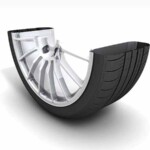
Is a Partial Repair Ever Good Enough?
Published in AASP-MN News – Thomas Greco Publishing
“Complete and proper repair” – it’s the golden standard that gets emphasized and reiterated in industry documentation and training events, and in a perfect world, of course every shop always performs every single task associated with restoring a car to its factory or pre-accident condition. But in the real world, various factors may create scenarios where shops do NOT address every item on that extensive list.
Sometimes, it’s accidental; the shop fails to properly diagnose all the necessary repair items. Maybe the aftermarket warranty company or insurer debates whether certain repairs are truly necessary, or perhaps the customer refuses to invest in something they view as non-critical or cosmetic. If the vehicle is still “driveable” without addressing those issues, is it “good enough”…or should shops be refusing these partial repairs?
AASP-MN News tackled this sensitive subject by talking to some leading industry trainers, but since auto service and collision repair shops will need to approach this concept differently, we began by talking to two automotive repair experts; collision shops can tune in next month when we will continue the conversation from that perspective.
So, how often do shops perform partial repairs? “A client literally called me yesterday about this,” Rick White (180BIZ) confirmed shops regularly contend with this type of conundrum. “A customer’s truck sustained $9,000 worth of damage, including mechanical damage, when a tree fell during a storm, and after the insurance company paid the vehicle owner, he asked the shop to complete the repair utilizing used parts so he can pocket some of the money. The shop owner wasn’t comfortable that would result in the best repair, and I agreed; I’d rather explain the price once than apologize for poor quality over a lifetime.”
Customers objecting to the cost is a prevalent reason for partial repairs, but White believes that payment issues are really a value issue. “The customer may not see the value in what I’m recommending because I didn’t explain it at a basic level that helped them understand how that service or repair will benefit them in the long run. It’s my job to educate them on why quality is more important than price. When someone insists on cheap brakes, are they going to remember that’s what they wanted when dust keeps building up and they’re making a squealing noise? They aren’t going to remember saving a few bucks; they’re just going to remember that I did the job.
“Customers are not vehicle experts, so they don’t know what’s going to fix their problem,” White adds. “They may request an oil change because they think that’s going to fix a noise in the engine, so it’s important that we ask the right questions and understand what they are trying to solve. We need to identify the issue and determine what they actually need in order to properly address it.”
He recommends stressing the price as an investment, not a cost. “Cars are expensive these days, so when a customer suggests replacing theirs because it needs repairs, I like to point out, ‘You’re throwing a $40,000 solution at a $3,000 problem.’ When they object to basic maintenance items, like changing the brakes, I might say something like, ‘It amazes me how people don’t prioritize the safety of their family more’ as a reminder that our goal is to protect them from injuries that occur when these items are neglected and fail.”
Some shops may be afraid to even ask customers for the sale because they’re expecting the rejection. “They try to do the repairs for the least amount of money possible because they’re very price-driven, and in some cases, they may even be willing to cut certain corners,” warns Maylan Newton (Educational Seminars Institute). “We need to stop that thought process! Performing repairs correctly is important for several reasons, starting with protecting the reputation that we’ve spent our entire careers building. No customer ever tells someone they asked the shop to cut corners, but they’ll definitely spread the word that the shop replaced this item that failed.”
It’s even scarier to think that some shops may be performing partial repairs unintentionally, due to a failure to diagnose all the necessary tasks. “People are driving a 5,000-pound missile down the road, so there’s a vast amount of liability in what we do,” Newton cautions. “If you perform a substandard repair and someone gets injured, the lawyers are coming after you. Doing a thorough diagnosis and repair lowers the shop’s liability.”
Of course, everyone makes mistakes, but White believes it’s important to own them. “The client doesn’t pay for a misdiagnosis, but it’s amazing how many shops will sell unnecessary repairs instead of just admitting that they made a mistake. They’re afraid their customers will believe they’re incompetent, but most people understand how complex our job is and will actually trust you more when you are willing to be vulnerable and admit an error.”
When it comes to partial repairs, driveability is a major factor which can often cause confusion and erode a client’s trust in the shop. “If you recommend a repair but tell a customer they can drive it for now, they’re going to wonder why you recommended it in the first place,” Newton says. “In the vehicle’s current condition, would you want it driving in front of you on the interstate? You don’t want to scare the customer, but you also need to be open and honest in sharing your professional judgment because if you tell them it’s okay to drive and something fails, you could be liable. More importantly, as professionals, we want to put reliable, dependable cars back on the road because we’re in a life-or-death business, and letting them drive off in an incompletely repaired car could put them (or someone else) at risk.”
“Shops aren’t there to fix cars; we’re there to keep people safe,” White stresses. “There may be some repairs or maintenance items that can be delayed because they aren’t safety issues, but maintenance is only maintenance until it isn’t. If neglected, they can become safety issues, so it’s important to be very clear when communicating with customers: ‘If you do not replace your brakes, they will fail.’ That could even mean refusing to work on the car if they won’t address safety issues. In the past, I’ve requested customers to sign a liability waiver based on their refusal to complete repairs that were necessary. [Editor’s note: AASP-MN has a sample waiver on its website for members’ use.]We have to protect our businesses, but sometimes, our job is protecting clients from themselves.”
Decades ago, it may have been occasionally acceptable to perform a partial repair, but with modern technology making cars increasingly complex, it’s imperative that shops recognize how many systems are interconnected.
“Because every system is hooked together and talking on a network now, a substandard repair could set off 10-12 codes and create an even bigger problem,” Newton suggests. “On older cars, you got paid for what you did with your hands, and there was some leeway. Some things could be delayed a bit, but now, with all these systems talking, it becomes a much larger job to fix it down the road. And if we don’t address it all, do those systems that we all rely on work correctly? A 2024 car is nothing like a vehicle from 1984, 1994, 2004 or even 2014, but our industry has not done a very good job of explaining how complex vehicles have become and are still becoming. Since one system’s failure could affect so much else, substandard and incomplete repairs are going to become evident much faster now and in the future.”
“We need to be able to explain how these systems are connected and why it makes sense to address multiple items at once,” White advises. “But remember that we are still dealing with a person who has a lot going on, so be ready to offer solutions, such as loaning them a car while theirs is in the shop or offering financing options, though the shop should never finance the repair themselves. And if it is a maintenance item that can be put off a little bit, schedule it before they leave the shop, document it and follow up as needed.”
Wait. Obviously, customers sometimes want a partial repair, so IS that ever good enough?!
“People tell you what they think they need, but they have no knowledge,” Newton observes. “Our job is to educate them and explain what they actually need so they help me fulfill my purpose. And that isn’t to make money; it’s to provide dependable, reliable transportation, and I do that by performing an inspection every time a car is brought in the shop. Then, I talk to the customer about what they need to invest in to make sure their car lasts as long as possible. We are the professionals they’re relying on.”
“There’s an unspoken expectation that the customer’s car is safe when you let them drive it away from your shop,” White agrees. “We need to get a whole lot better at communicating, which begins with listening and asking questions to understand our customer’s wants, needs and goals. Then it’s our duty, responsibility and obligation to help them achieve that – unless it’s unsafe, in which case we need to either get them to realign or walk away.”
What about on the collision side where the vehicle has already been damaged in an accident? Are all those repairs necessary? What if it’s just a dented bumper or a scratch in the refinish? Stay tuned to next month’s AASP-MN News when we’ll talk to collision industry experts to find out what they think!




